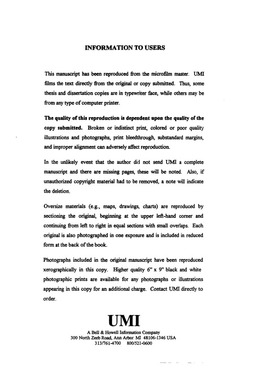| dc.contributor.advisor | Thompson, Gary L., | en_US |
| dc.contributor.author | Sinha, Binita. | en_US |
| dc.date.accessioned | 2013-08-16T12:29:47Z | |
| dc.date.available | 2013-08-16T12:29:47Z | |
| dc.date.issued | 1997 | en_US |
| dc.identifier.uri | https://hdl.handle.net/11244/5504 | |
| dc.description.abstract | In the United States highways and expressways, affordable automobiles and cheap gasoline have increased the zone of influence of cities and metropolitan areas by encouraging the growth of residential suburbs. Also, preferences in the choice of residential location are influenced by the amenities of suburban life. One significant policy issue that brought the question of urban education into national prominence was that of bussing students to achieve racial balance in schools. This plan fueled urban sprawl and suburbanization between 1950 and 1970 as the "white flight" syndrome developed. New schools grew in the suburbs which were perceived to be better in terms of quality as compared to the central city schools. This dissertation has established that the quality of schools has influenced people's choices of residential relocation. Good suburban schools that resulted from outward migration of population appear to have become a major pull-factor attracting further growth and development of residential areas. This dissertation analyzes relationship between school quality and suburban growth patterns and measures the influence of school district quality on residential growth in the metropolitan fringe area of Oklahoma City. | en_US |
| dc.description.abstract | There are four essential components of this research which include quantitative analysis of quality of school districts; analysis of patterns and trends in residential growth; the integration of results; and interview and field checks of data. Quality of schools has been measured with the help of input variables. Growth of residential area has been measured with the help of census data on number and median value of occupied residential units. A Spearman Rank Correlation analysis has been done to see if there is a significant correlation between quality of school districts and trend in residential growth. Findings of this dissertation research indicate that quality of school districts has a significant influence on people's choice of residential location in the Oklahoma City Metropolitan Area. | en_US |
| dc.format.extent | 161 leaves : | en_US |
| dc.subject | Public schools Oklahoma Oklahoma City. | en_US |
| dc.subject | Cities and towns Growth. | en_US |
| dc.subject | Urban and Regional Planning. | en_US |
| dc.subject | Suburbs Oklahoma Oklahoma City. | en_US |
| dc.subject | Education, Sociology of. | en_US |
| dc.subject | Geography. | en_US |
| dc.title | The influence of public schools on residential growth in the urban fringe of Oklahoma City. | en_US |
| dc.type | Thesis | en_US |
| dc.thesis.degree | Ph.D. | en_US |
| dc.thesis.degreeDiscipline | Department of Geography and Environmental Sustainability | en_US |
| dc.note | Adviser: Gary L. Thompson. | en_US |
| dc.note | Source: Dissertation Abstracts International, Volume: 58-05, Section: A, page: 1855. | en_US |
| ou.identifier | (UMI)AAI9733698 | en_US |
| ou.group | College of Atmospheric & Geographic Sciences::Department of Geography and Environmental Sustainability | |
